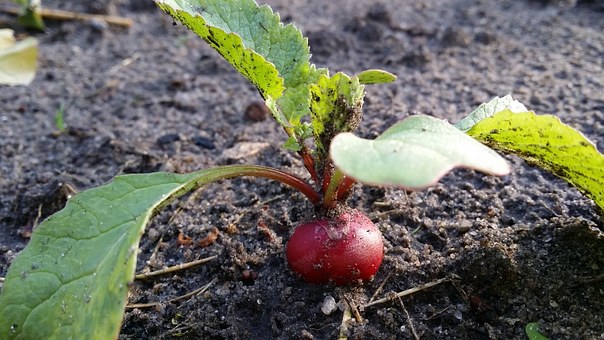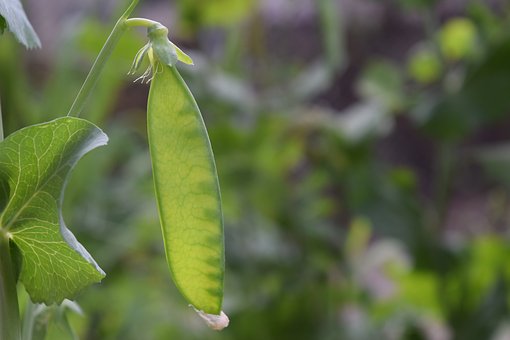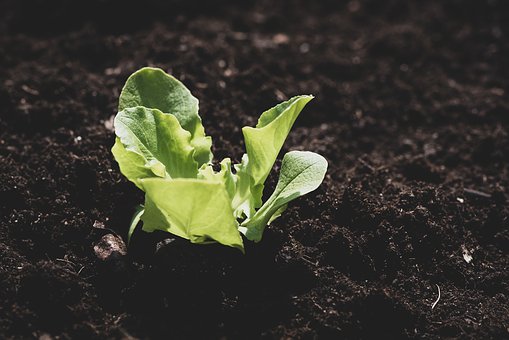Many standard garden vegetables can’t be started from seed or planted outside until the soil is warm enough and the threat of frost is gone. However, there’s a great variety of cool season spring crops that can be started early to give you a jump start on the gardening season, so that you’ll have food on your plate long before the summer vegetable start coming in.

Assess Your Local Climate and Weather Patterns
Based on your local climate and weather patterns, the cool season vegetables can be planted in trays and pots in a sunny porch or window, directly in the soil underneath a low tunnel or a row cover, or even directly in the soil with no cover.
Planting your vegetables under a low tunnel or a row cover will not only warm up the soil faster, it will also protect the seedlings from frost; although a hard freeze or extended periods of really cold weather can still kill plants under a row cover.
Planting in trays and pots that can be moved into the sun on the warmer days and then brought inside for the night is a great way to alleviate the risk of frost damage. Of course, don’t forget to bring them back inside. Container gardening is also a great way to start growing some of your vegetables on balconies, windowsills, or even decks, even if you don’t have a plot for an outside garden.
Great Choices for an Early Garden
The following spring vegetables can be easily planted from seed and are great choices for an early garden. They are also foolproof enough to grow, and most beginner gardeners will be able to reap a good harvest.
1. Spinach
One of my most favourite greens to eat is the fresh baby spinach. It’s fairly easy and quick to sprout and grow in a spring garden and can be incredibly frost-resistant, especially when it’s grown under cover. There are lots of spinach varieties, most of which can be categorized as savoy and semi-savoy (these tend to have curly or crinkled crisp leaves) or smooth leaf (which have a smooth texture and flatter leaves).

2. Chard
Chard is a beet relative and another perfect spring green that’s easy to grow from its seed. It can be eaten cooked or fresh, or you can toss it into a smoothie or a salad. I prefer planting chards a bit closer than the instructions on the seed packet recommend. I then start to harvest the crowded baby greens while thinning the beds.
Chard is available in a variety of sizes, textures, and color, though most of the color tends to show on the thick stems while the leaves remain dominantly green. Growing some white, red, and yellow chard along with the traditional green chard will help add some color to the spring salads. At the same time, it will liven up the look of your garden with color. Some varieties can actually be harvested as baby greens in about 25 days, with the leaves taking about twice as long to grow to full size.
3. Lettuce
Although lettuce can grow in full-sized heads that we are all used to from the grocery store, I’ve found out that growing it for the baby greens is a lot easier and quicker. It also ensures you have an almost constant supply of lettuce from spring to the better part of summer. I like to use mixed lettuce seeds (also called mesclun mixing) and rather than sowing them and leaving the recommended spaces for the head lettuce variety, I like to sow them closer together per row. This yields a row of healthy lettuce leaves that you can harvest easily and do so continually through the season.
Lettuce is available in a number of leaf shapes and colors, not just the standard romaine green; there’s also green and red leaf lettuce, and butterhead variants. Growing mixed baby greens will give you a wide variety of colors and textures for your salads. You can harvest the baby greens in a couple of weeks and planting the successions of seeds every week or two, and you can have a constant supply of fresh greens.

4. Radishes
These are some of the fastest greens that you can grow, with many radish varieties being ready for harvesting in as little as 3 weeks. Radishes are also great when it comes to inter-planting with veggies like lettuce and other spring greens. In fact, they can naturally help to thin these crops as the radishes get harvested.
Many people are only familiar with the round pink, red, and white radishes often sold in grocery stores. However, radishes come in lots of different shapes, colors, and sizes, and they can range from spicy to sweet based on the variety. They are such a great vegetable that helps kids grow, and the seeds are large enough for small kids to help with the planting. They are also quick to mature and easy to harvest, which makes them a perfect plant for the impatient gardeners.
5. Kale
Although it’s quite possibly the most hated vegetable on the list, kale is another perfect spring veggie that’s easy to grow from seed. It can be harvested as a baby green or as full-sized leaves and can provide lots of food with little effort. Whether you prefer eating it raw in your smoothies, as part of your salad, or stir-fried or steamed in a main dish; kale is a great addition to any diet.
Kales can be crinkly and dense, much like the dinosaur kale, or more ruffle-y with flatter leaves as with the red Russian varieties. Kale is often sweeter as a baby green during spring, and later in fall just after the first frost. I have harvested baby kale leaves in as little as three weeks, and the full-sized leaves tend to mature in anywhere from 40 to 60 days based on the variety.

6. Peas
Peas such as snow peas and other pod pea varieties are also perfect vegetables for kids. Pea seeds are large enough for them to help with the planting, and I’m yet to meet a kid who didn’t enjoy going searching in the garden for peas to harvest.
Snap peas and shelling peas have a tendency of taking a little longer to mature, but they’re still a major hit with kids. In fact, many kids like to just scarf down snow peas fresh from the pod and some actually hate eating cooked peas. And honestly, I’m not that much of a big fan of cooked peas either.
Peas usually take anywhere from 50 to 65 days to reach full maturity, depending on the variety, and can grow as bushes or as vines. They also lend themselves well for trellising and can grow in a regular garden bed. If you want the best germination rates, soak the pea seeds in water overnight before you plant them.




